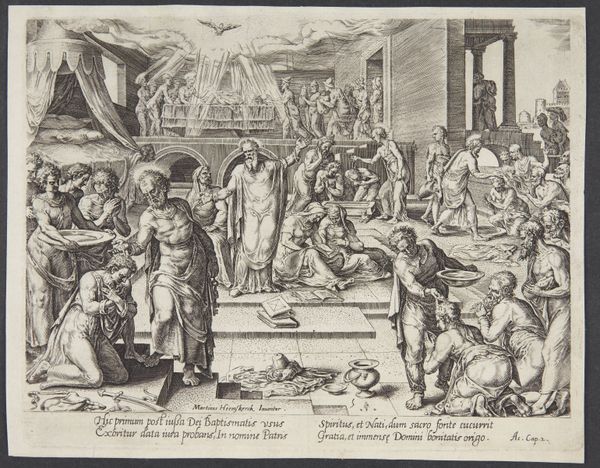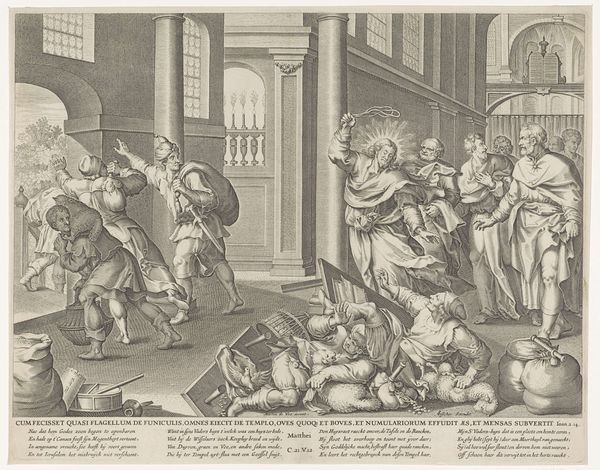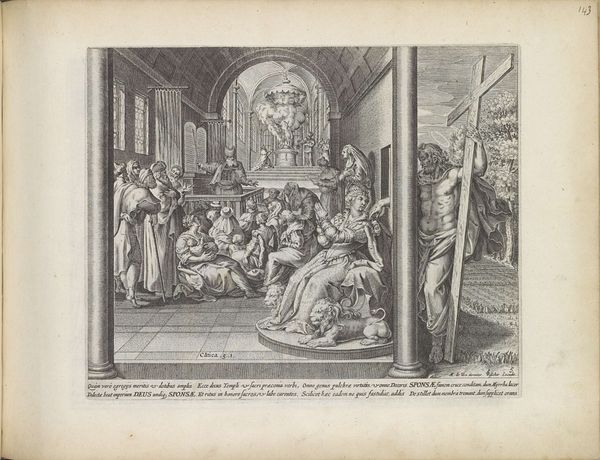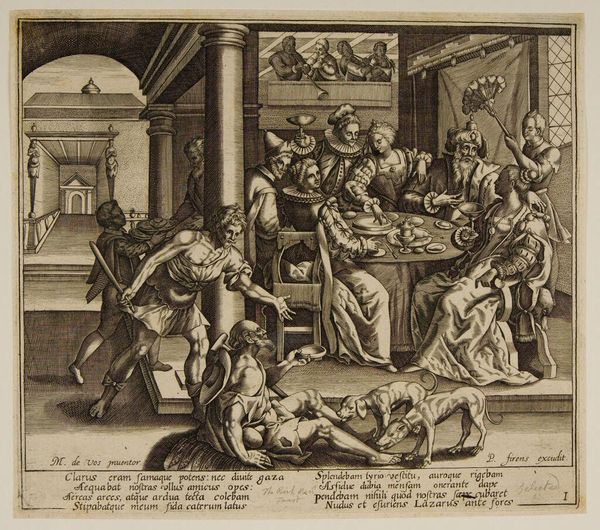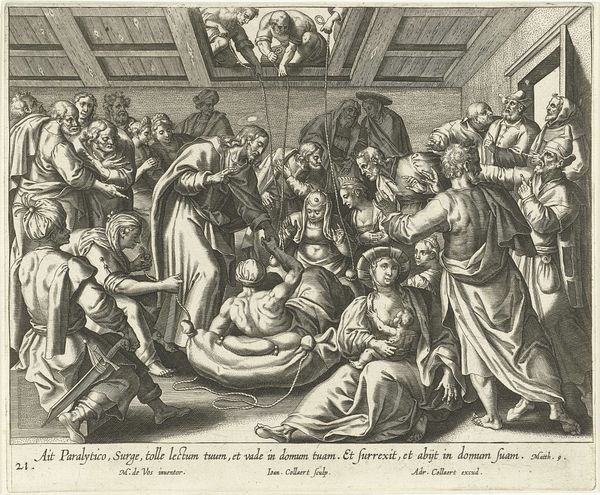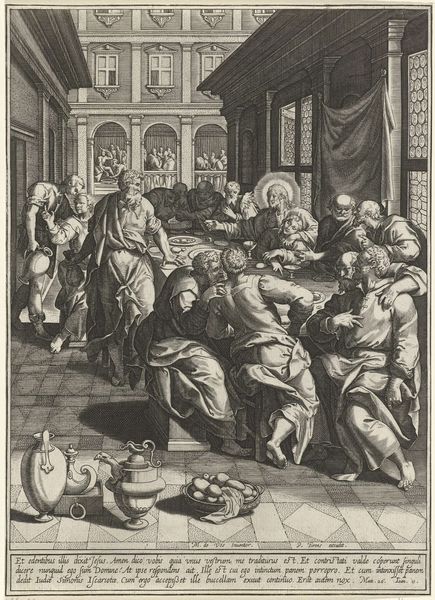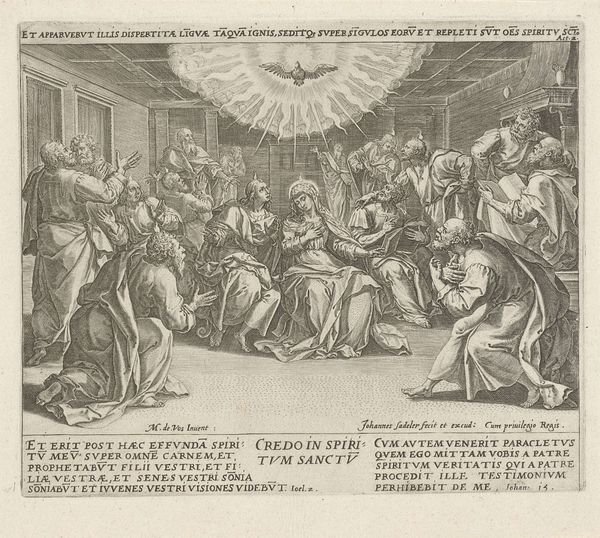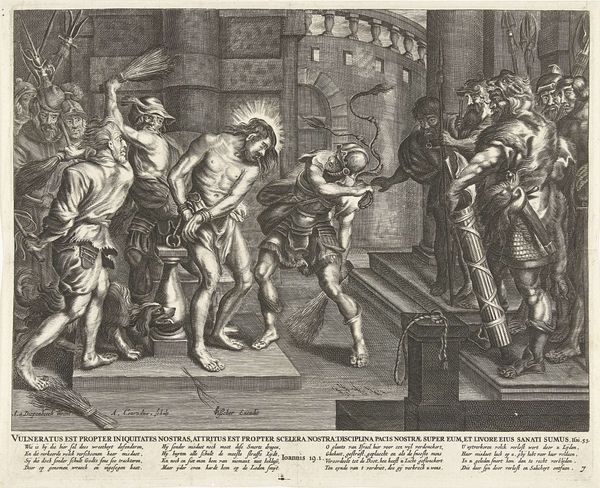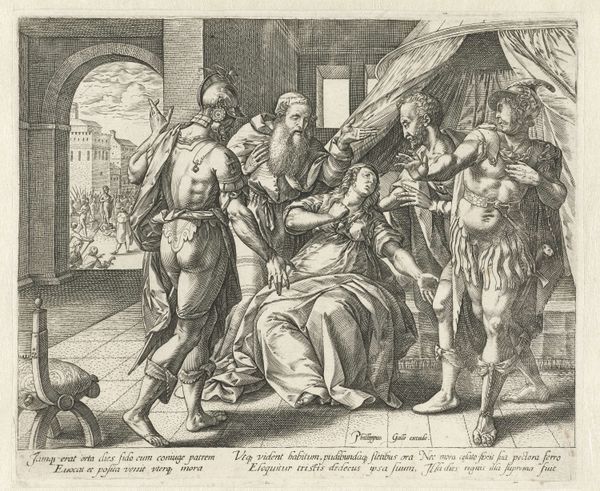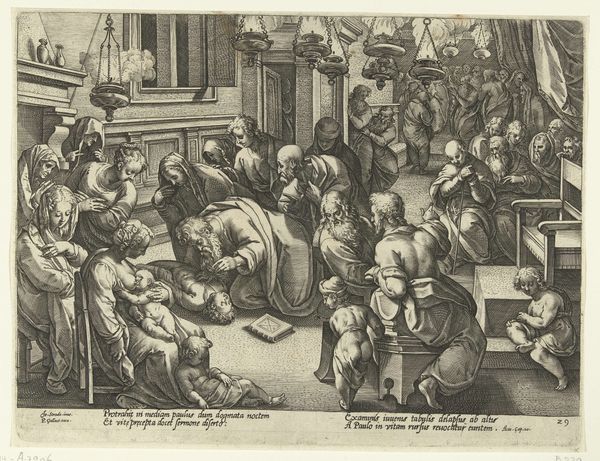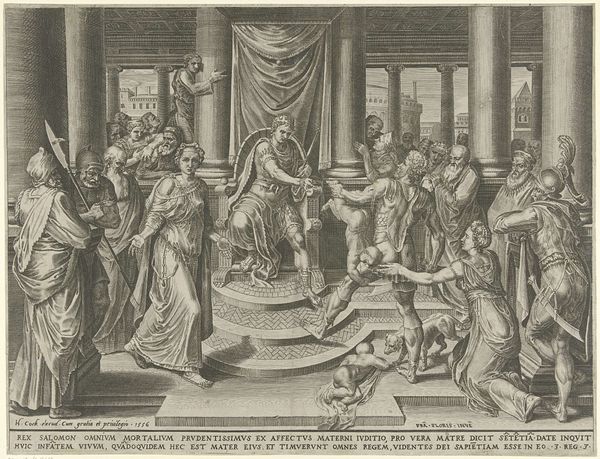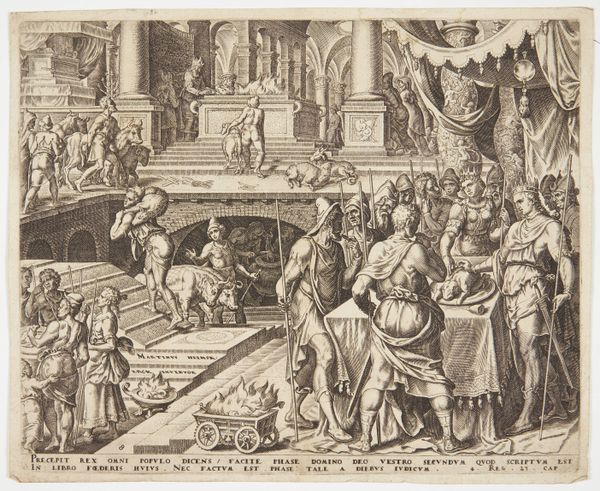
print, engraving
#
narrative-art
# print
#
figuration
#
11_renaissance
#
history-painting
#
engraving
Dimensions: height 226 mm, width 275 mm
Copyright: Rijks Museum: Open Domain
Curator: What a chilling scene. It has such a dark and oppressive mood. Editor: Agreed. Let's orient our listeners. This print, currently housed at the Rijksmuseum, is entitled "Bestraffing van de man zonder bruiloftskleding," or "Punishment of the Man Without Wedding Clothes," and was created by Wierix sometime before 1585. As an engraving, it invites inquiry into the artistic process. Curator: Absolutely. The medium itself—engraving—speaks to a particular kind of labor and reproducibility. It allows for the wide dissemination of such didactic, politically charged imagery. And look closely at the line work – the skill and control are palpable. Editor: It’s fascinating how Wierix uses that skill to convey a complex narrative, illustrating a parable perhaps reflecting anxieties of the time. The lavish wedding feast contrasts starkly with the brutal punishment in the foreground. Curator: That feast really commands your attention, doesn’t it? A king surveys his banquet while, at his feet, a man is violently subdued, presumably for his inappropriate attire, as the title suggests. The clothing that wasn't right became grounds for exclusion, quite a striking claim to explore considering art as an expression of work and of one’s place within society. Editor: Precisely. Think about the intended audience, those who consumed such images. What societal messages were being reinforced through this readily accessible medium? Consider the implied critique of social transgression – or the power structures needed to maintain order. Curator: Looking closer, I’m struck by how the artist differentiates textures through variations in line and crosshatching – the sheen of the royal garments versus the rough, almost grotesque, rendering of the punished man's flesh. These subtleties contribute to the overall visual impact, almost demanding contemplation about consumption of goods during the era. Editor: The setting itself plays a crucial role too. This banquet hall, with its visible scaffolding in the rear and rough beams in the ceiling contrasts grandeur and practical making, a visual staging for power dynamics and moral lessons distributed to and interpreted by a wide populace. It reminds us that art like this served as more than decoration. Curator: Examining this engraving opens doors to questions about materials, labour, and the socio-political messaging embedded in mass-produced images of the period. Editor: I find it offers a disturbing, yet revealing, window into the anxieties surrounding social order, authority, and the public performance of virtue and exclusion within 16th-century Europe.
Comments
No comments
Be the first to comment and join the conversation on the ultimate creative platform.

